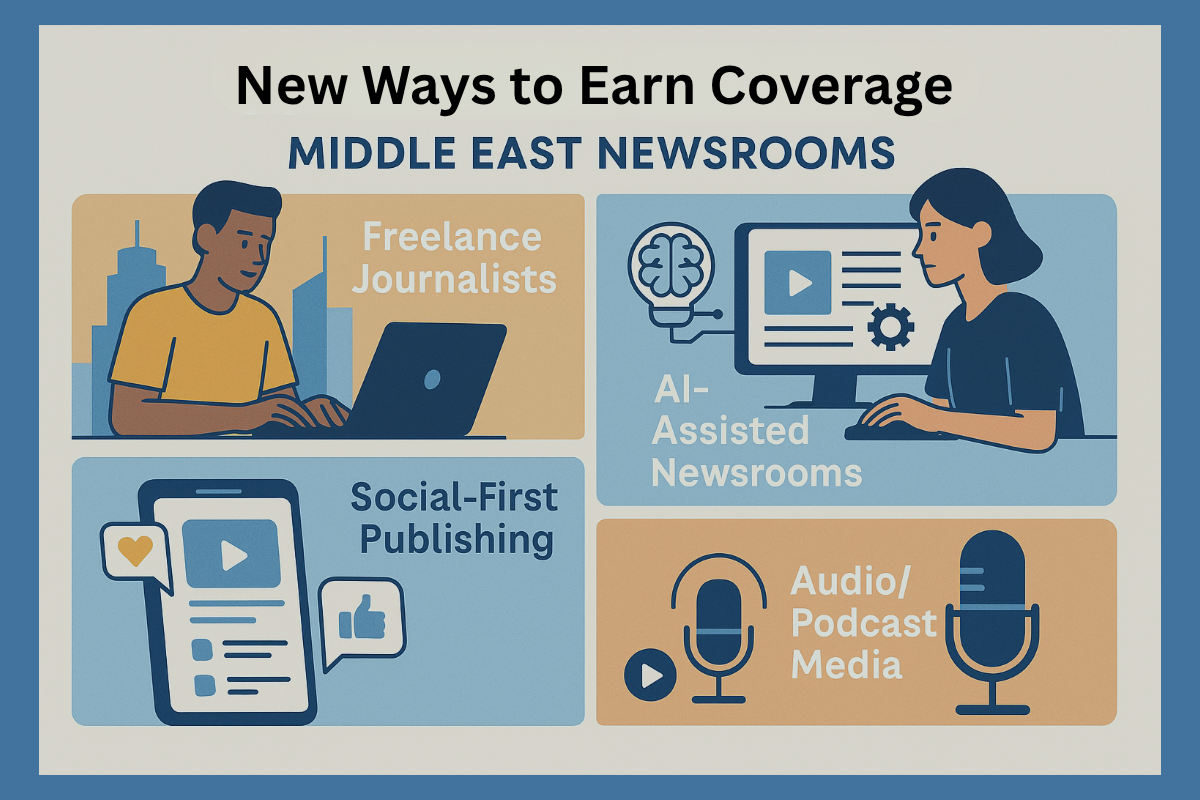The way journalists work has changed dramatically especially in the Middle East. AI-assisted newsrooms, more freelancers, smaller editorial teams and a clear push towards social-first content have reshaped how stories are found, verified and published. For businesses, the message is straightforward: media relations today is not about chasing coverage. It’s about being relevant, responsive and genuinely helpful.
Understand the new Middle East newsroom
Most regional newsrooms now run as hybrid operations. A small core team sits alongside freelance writers, contributors and specialists covering several beats at once. Many use AI tools to screen releases, check facts and sort large amounts of content quickly. The result is a faster, leaner, more pressured news cycle. Journalists now more than ever expect three things: relevance, clarity and immediate availability.
- Know what journalists actually need: The fundamentals haven’t changed, but the pace has. Journalists consistently ask for short emails, clear angles, usable data and spokespersons who are prepared and available, often at very short notice. The real difference now is speed. If a pitch can’t be understood in a few seconds, it is usually skipped. If your spokesperson cannot respond immediately, let them know
- Craft a pitch that fits today’s attention span: Long pitches simply do not work. A media-ready pitch needs a one-line hook that explains why the story matters today, a short paragraph that ties the angle to a regional trend and one sentence offering what you can provide, whether that is a quote, data or an interview. Include a link to the spokesperson’s bio and stop there. If the angle cannot be summarised in a single line, it probably needs more work.
- Align with what editors are prioritising: Editors are assessing whether a story helps audiences understand a business trend, includes verifiable data and can be used across formats. If your pitch makes their lives easier, you stand a better chance.
- Prepare your spokesperson properly: With faster turnaround times, unprepared spokespersons are more exposed than ever. Before the interview, keep their talking points to three clear messages, help them understand the outlet and practice concise answers. During the interview, encourage them to keep it conversational, avoid jargon and give examples when offering opinions. After the interview, thank the journalist and offer additional facts if needed.
- Give journalists the assets they need quickly: A strong media kit is a simple one: high-resolution images, a spokesperson bio, a clean boilerplate, relevant data, a fact sheet and any previous coverage. If you have short video clips, even better. Journalists choose sources who save them time.
- Build relationships, not transactions: Real media relationships come from consistency and usefulness, not from pushing stories that do not fit. Share insights even when you have nothing to pitch, understand beats, respect deadlines and be human about it. Journalists remember who makes their work smoother and who doesn’t.
- Be ready for social-first and audio formats: Short video, podcasts and quick expert soundbites are part of today’s media mix in the region. Journalists increasingly want quotes they can repurpose into visual cards or short audio clips. Spokespersons who are comfortable with shorter, punchier formats automatically secure more opportunities.
- Treat freelancers with the same respect as editors: Freelancers are now central to regional coverage. Many write for several outlets at once, across sectors. If they trust you, they come back repeatedly because you make their work easier. They are an essential part of a long-term media relations strategy.
- Understand how AI shapes coverage: AI tools help journalists filter, verify and summarise. That means inflated claims and vague statements are flagged instantly. Factual, clear, well-supported content stands out. Assumptions about what you can hide no longer hold. Keep it clean, clear and credible.
- Make it easy for journalists to say yes: This is the core of media relations. Offer clear angles, strong data, quick responses, prepared spokespersons and clean assets. Respect their time and judgement. You cannot force coverage, but you can earn it by being consistently useful.
While the media landscape continues to move quickly, the principles of good media relations remain steady. If you stay relevant, clear and respectful of the journalist’s craft, you’ll continue to build trust and secure coverage that actually matters.



